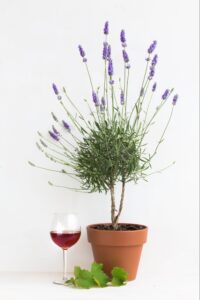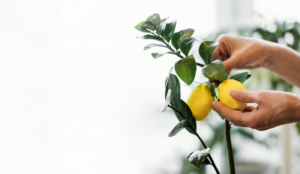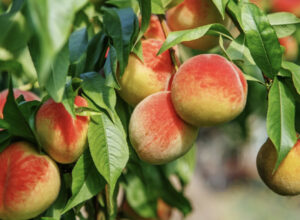The Ultimate Guide to Nurturing American Tree Frogs

The world of tree frogs is as colorful and varied as the amphibians themselves. These little creatures, with their vibrant hues and captivating behaviors, have charmed their way into many homes. Providing them with appropriate care, a suitable environment, and a balanced diet is essential to ensure they lead a healthy and active life.
In this comprehensive guide, we delve into the intricate details of caring for these fascinating creatures, including insights into their diet, habitat setup, health monitoring, and maintenance practices.
Understanding American Green Tree Frogs
American green tree frogs (Hyla cinerea) are celebrated for their enchanting emerald tone, emblematic of the rich foliage in the southeastern United States. This adaptive coloration not only augments their aesthetic allure but is instrumental in their survival, enabling a harmonious integration into their natural habitats. The delicate and porous nature of their skin accentuates their vulnerability, advising minimal handling to preserve their physiological integrity.

These amphibians’ habitat is a vital component of their overall health and well-being. It requires meticulous attention to detail, encompassing parameters like temperature, humidity, and cleanliness. The maintenance of optimal living conditions is facilitated by a regimen of weekly inspections and cleanings, ensuring the elimination of contaminants and the preservation of a balanced ecosystem conducive for their thriving existence.
Behavior and Temperament
The intrinsic shyness of American green tree frogs contributes to their enigmatic allure. Their reticence to handling is attributed to their delicate epidermal composition, which is susceptible to damage upon frequent contact. The nocturnal essence of these creatures unveils a spectacle of activity after dusk, with males often engaging in melodious vocalizations, echoing the symphony of the night.
Though not apt for physical interaction, observing these amphibians can be a fascinating experience. Their eyes, expressive and profound, paint a narrative of an unspoken connection with their environment. Each movement and gesture is an articulation of their intrinsic behavioral patterns, offering insights into their world, replete with instincts and adaptations honed over millennia.
Physical Attributes and Lifespan
The Hyla cinerea’s size fluctuates between 1.5 to 5 inches, reflecting a diversity congruent with genetic and environmental factors. The amphibians’ lifespan, spanning 8 to 10 years, is contingent upon the quality of care and the environmental conditions they are subjected to. Their vitality and longevity are testimonies to the efficacious integration of dietary and environmental management practices.
The physique and longevity of these amphibians are reflective of their adaptive capacities and the quality of nurture they receive. Each individual, with its distinct characteristics, embodies a unique narrative of evolution, adaptation, and survival, articulated through its physical attributes, behaviors, and lifespan.
Key Facts and Habitat Requirements
Tree frogs are adept climbers, their feet equipped with specialized disks that grant them remarkable agility. These low-maintenance amphibians require a terrarium that caters to their arboreal inclinations. Vertical space, ventilation, and accessibility are paramount, factors that are integrally considered in their housing designs.
Though many tree frogs exhibit social tendencies, the Cuban tree frog is an exception, displaying a marked inclination for solitude. The intricacies of their housing are reflective of an understanding of their behavioral and physiological needs, ensuring an environment that is both safe and stimulating.
Creating an Ideal Environment
A stimulating environment for tree frogs is characterized by elements that cater to their natural instincts and behaviors. Incorporating coconut fiber or bark bedding ensures comfort and hygiene, while the incorporation of branches facilitates their innate climbing tendencies. The amphibians’ well-being is further accentuated by meticulous temperature and humidity controls, replicating the ecological conditions of their natural habitats.
Health and Wellness
The tree frogs’ health is enhanced by supplementary Vitamin D, an essential component of their nutritional intake. The initial days post-adoption are critical for acclimatization, warranting minimal handling to mitigate stress. Vigilance in monitoring behavioral and physical changes can preempt health issues. Symptoms like skin discoloration, increased reclusiveness, or changes in feeding patterns necessitate immediate consultation with a specialized veterinarian.
Indicators of Health
A healthy tree frog is characterized by its alertness, clear eyes, healthy skin, regular eating habits, and stable weight. On the contrary, signs of ill health manifest as lethargy, skin lesions, loss of appetite, distressed breathing, weight loss, weak leg movements, and bloated abdomen.
Environmental Controls
The nocturnal nature of tree frogs underscores the necessity for intricate lighting controls that mimic natural day-night cycles. Thermoregulation is achieved by maintaining a daytime temperature of 75-85°F and a nocturnal temperature of 65-75°F. Humidity is another critical parameter, with levels maintained between 50% and 80% to optimize the amphibians’ health and activity.
Housing Specifics for American Green Tree Frogs
Their arboreal lifestyle necessitates a housing design that is spacious and rich in climbing resources. The tank’s cleanliness is paramount, with soap avoided to mitigate the risk of chemical exposure. Washable liners facilitate hygiene maintenance, underscoring the integration of practical solutions for sustainable cleanliness.
Adherence to specific lighting and temperature requirements ensures an environment where the frogs can exhibit natural behaviors, grow, and thrive. Every element, from the tank’s design to the environmental controls, is a testament to an understanding of their natural inclinations and physiological needs, fostering a habitat where these fascinating creatures can flourish in health and vitality.
Housing for Tree Frogs
A suitable environment is instrumental for the thriving existence of tree frogs, influencing their physiological well-being and behavioral expressions. The enclosure should be sufficiently spacious, allowing for normal behaviors and exercise, ideally constructed from glass and topped with a tight-fitting screen lid to ensure adequate ventilation while preventing escapes.
- Within the habitat, considerations for appropriate planting and decorative elements are vital. Incorporating large driftwood, an assortment of branches, and artificial, non-edible plants enhances the enclosure’s aesthetics and functionality. The back wall could either be adorned with a dark green material or have slabs of cork bark attached with large suction cups, enhancing the visual appeal and providing additional climbing surfaces.
- Humidity, a critical aspect of the frog’s habitat, should be maintained between 70-90%. This can be achieved by daily misting, ensuring an optimal moisture level conducive to the amphibians’ health. The substrate should consist of a mulch-type material like coconut fiber or dampened sphagnum moss, steering clear of gravel and artificial turf due to their harshness on the amphibian’s delicate skin.
The habitat’s temperature should oscillate between 68°F at night and 75-88°F during the day, contingent on the specific species housed. This thermal regulation is facilitated by fluorescent lighting, operational for 10-12 hours daily, with the incorporation of an incandescent day bulb or ceramic heater for basking areas. Low-level UVB lighting, though recommended, should be balanced with available hiding spots to shield the frogs from excessive light exposure.
Temperature and Heating Requirements
A nuanced approach to temperature regulation within the enclosure ensures the frogs’ thermal comfort. Heat sources, including heat mats or lamps, are instrumental in establishing a temperature gradient ranging from 18°C to 32°C. These heat sources should be regulated with a thermostat to preclude hazardous temperature fluctuations, ensuring the amphibians’ safety and comfort.
Light and Heat Regulation
Being nocturnal creatures, tree frogs are less dependent on light. However, the optional integration of a UVB fluorescent light tube can augment their calcium metabolism, enhancing their overall health. Heat regulation, pivotal for these cold-blooded beings, is facilitated by a ceramic heat emitter establishing a thermal gradient for self-regulation. Temperatures should not exceed 82°F in the warm spots of the enclosure.
Importance of Proper Lighting
In the captivity setting, UV lighting is paramount. It aids the amphibians in calcium metabolism, averting the risk of metabolic bone disease. Frogs should be able to bask close to the UV light source, and depending on the type and brand of the UV globe, replacements every six to twelve months ensure optimal light intake.
Humidity and Hydration
Maintaining optimal humidity levels within the enclosure is essential. Innovative solutions like air pumps, bubblers, and living plants can augment humidity, especially in larger enclosures. A balanced approach, ensuring 50-60% humidity during the day and elevating it to 80-100% at night, is recommended. Automated misters and foggers can be instrumental in ensuring consistent moisture levels.
Feeding Regimen for American Green Tree Frogs
A balanced diet for these frogs encompasses a variety of insects, predominantly crickets. These crickets should be enriched with essential nutrients before feeding, ensuring the frogs receive a balanced diet. Feeding frequency can be adjusted based on the season, with an increment during the warmer months.
Diet and Nutritional Considerations
Tree frogs necessitate a well-rounded diet comprising a diverse assortment of insects. Gut-loaded crickets and mealworms, enriched with essential nutrients, are pivotal dietary constituents. The crickets, subjected to a high-protein, nutritious meal prior to feeding, are further enhanced with a calcium and multivitamin supplement to bolster the frog’s nutritional intake.
Australian Tree Frogs: Dietary Needs
Australian tree frogs exhibit distinct dietary preferences. Their insectivorous diet encompasses a variety of live insects, and care is needed to ensure a balanced nutrient intake. Avoiding tap water and opting for treated or conditioned water is essential to prevent exposure to harmful chemicals.
In conclusion, a comprehensive approach to housing, diet, temperature, and humidity regulation is integral to ensuring the health and well-being of tree frogs. Attention to their specific needs, behaviors, and physiological requirements ensures a thriving existence, aligning with ethical and sustainable practices in amphibian care.
The Right Substrate for Your Amphibian Pets
The foundation of a healthy environment for tree frogs begins with selecting the correct substrate that aligns with their natural habitat. Reptile carpets or coconut fiber mats emerge as primary choices. These options are not only cost-effective but also guarantee safety, as there is no risk of accidental ingestion by the amphibians.
Although alternatives like cypress mulch, organic soil, moss, cork bark, or smooth gravel can be employed, they require meticulous maintenance. Particularly for gravel, weekly replacements are essential to maintain hygiene since thorough sanitization requires boiling. Amphibian owners aiming for a substrate that minimizes the risk of ingestion-related health issues would find reptile carpets or coconut fiber mats to be ideal choices.
Integrating Terrarium Plants
The incorporation of terrarium plants contributes to replicating the natural ecosystem of tree frogs. Plants that are adaptive to conditions synonymous with the amphibians’ natural habitat, marked by temperatures in the 70s, high humidity, and lower light, are preferred. Among these, sturdy ferns and Philodendron are optimal, given their resilience and non-toxicity to the amphibians.
Observing Normal Behavioral Patterns
Tree frogs are nocturnal creatures, with a penchant for climbing. The female species are typically larger, an aspect to note for potential breeders. Their activity peaks at night, showcasing a vibrant and dynamic behavior that is both fascinating and indicative of their health status.
Maintaining the Habitat
The upkeep of the habitat is a weekly necessity. It involves a thorough cleaning process where the amphibians are temporarily placed in a secure environment. The tank and furnishings are then scrubbed, rinsed with hot water, and dried completely before reintroducing the clean substrate and the amphibians.
Focus on Grooming and Hygiene
Handling of tree frogs should be minimal and executed with utmost caution. Utilizing latex gloves is essential to protect the amphibians from oils or residues on human skin. Amphibians are known to secrete toxins; hence, precautions should be taken to avoid contact with eyes, mouth, or open wounds.
Addressing Common Health Issues
Skin and eye infections, stemming from bacterial and fungal agents, are prevalent in amphibians. Symptoms include pus, swelling, or redness. Respiratory infections, though less common, are linked to inconsistent humidity levels within the enclosure, leading to symptoms like wheezing, drooling, and lethargy.
- Parasitic infections often present as reduced appetite without other visible symptoms, necessitating diagnostic interventions by a specialist veterinarian. Regular fecal examinations are instrumental in detecting parasitic overgrowth.
- Ammonia poisoning, a condition precipitated by waste accumulation in the enclosure, underscores the necessity for regular cleaning. Early detection and intervention by a qualified vet can address these health issues effectively.
Chemical intoxication arises from exposure to harmful agents like soap, detergent, and pesticides. The manifestation of symptoms like weak hind legs, lethargy, and skin color changes often indicate nutritional deficiencies. Skin problems, including abrasions and infections, are indicative of an unclean or inappropriate environment.
Essential Supplies for Tree Frog Care
To cater to the holistic needs of tree frogs, a comprehensive collection of supplies is crucial. These essentials not only facilitate an environment that mirrors their natural habitat but also ensure their health and well-being. Here’s a detailed list of items essential for housing and nurturing these delicate creatures:
- Adequately Sized Enclosure: Ensure space for mobility and exploration.
- Informative Book: A resource to guide on specific needs and behaviors.
- Substrate Material: Foundations for flooring to mimic natural grounds.
- Moss: Facilitates humidity and offers a natural touch to the habitat.
- Dishes for Water and Mealworms: Vital for hydration and feeding.
- Climbing Décor: Enables their instinctive climbing behavior.
- Plants: A touch of nature for aesthetics and comfort.
- Heat Light & Fixture: Regulate temperatures for their comfort.
- Under Tank Heater: Additional heating to maintain the desired warmth.
- UVB Lighting: Essential for metabolizing calcium.
- Supplements: Boosts their diet for optimum health.
- Cricket Keeper & Food: For nurturing live food that’s part of their diet.
- Climate Monitors: Tools to track temperature and humidity.
Selecting an American Green Tree Frog
While the allure of having a tree frog as a pet is undeniable, prioritizing the conservation of wild populations is essential. Opting for amphibians that are bred in captivity and free from diseases is pivotal. Trusted breeders, vetted through recommendations from exotic veterinarians or experienced amphibian owners, remain the go-to sources for healthy tree frogs.
An ideal tree frog candidate for petting should be energetic, with clear, bright eyes and immaculate skin. An opportunity to observe its eating habits can be a significant advantage, as a healthy tree frog seldom declines food. Observations for any signs of lethargy, breathing difficulties, or a bloated abdomen are critical to avoid adopting an ill pet.
Gray vs. White Tree Frog Care
How to take care of a gray tree frog?
Gray tree frogs require specialized care to flourish in captivity. Some fundamental aspects of their care include:
- Diet: They primarily consume insects, with a focus on variety for balanced nutrition.
- Temperature: A gradient with a warm and cool side facilitates temperature regulation.
- Humidity: Maintenance of moderate to high levels of humidity is essential.
- Enclosure: Incorporating climbing structures and plants enhances their living space.
How to take care of a white tree frog?
White tree frogs have unique requirements distinct from their gray counterparts:
- Diet: While insects are a staple, diversity and supplementation are vital.
- Environment: They thrive in moderate temperatures and require ample hiding spaces.
- Hygiene: Regular cleaning to prevent bacterial and fungal infections.
- Handling: Minimal handling is advised to protect their sensitive skin.
Customizing Tree Frog Care
Adjusting and enhancing the environment for tree frogs involves ongoing learning and adaptability. Every tree frog, regardless of its species, presents individual needs and behaviors. Owners are encouraged to engage in continuous learning, seeking advanced knowledge and insights beyond foundational care to foster an enriched living environment.
The enhancement of tree frogs’ habitat to promote not just survival but also their well-being and enriched living experience is central. From diverse diets to environment customizations, every detail contributes to their quality of life. Enrichment activities and structures that promote natural behaviors, like climbing and exploration, add intrinsic value to their lives.
Conclusion
The care of tree frogs transcends the procurement of essential supplies and extends to a detailed, informed, and compassionate approach tailored to their specific needs. Whether it’s the American Green, Gray, or White tree frog, understanding their unique requirements, behaviors, and health indicators is fundamental.
The provision of a safe, enriched, and health-conducive environment is a meticulous process, encompassing the appropriate selection of substrates, climate control, diet, and health monitoring. Every piece of equipment, choice of food, and environmental enrichment contributes to the holistic well-being of these delicate creatures.
Prospective owners are urged to integrate a philosophy of continuous learning, observation, and adaptability in caring for tree frogs. The amalgamation of knowledge, vigilance, and empathy fosters an environment where these amphibians not only survive but thrive, showcasing the vibrancy, dynamism, and unique behaviors that make them fascinating pets. The intricate balance between their physical environment, diet, health, and well-being is a journey of discovery, rewarding for both the amphibians and those privileged to care for them.




